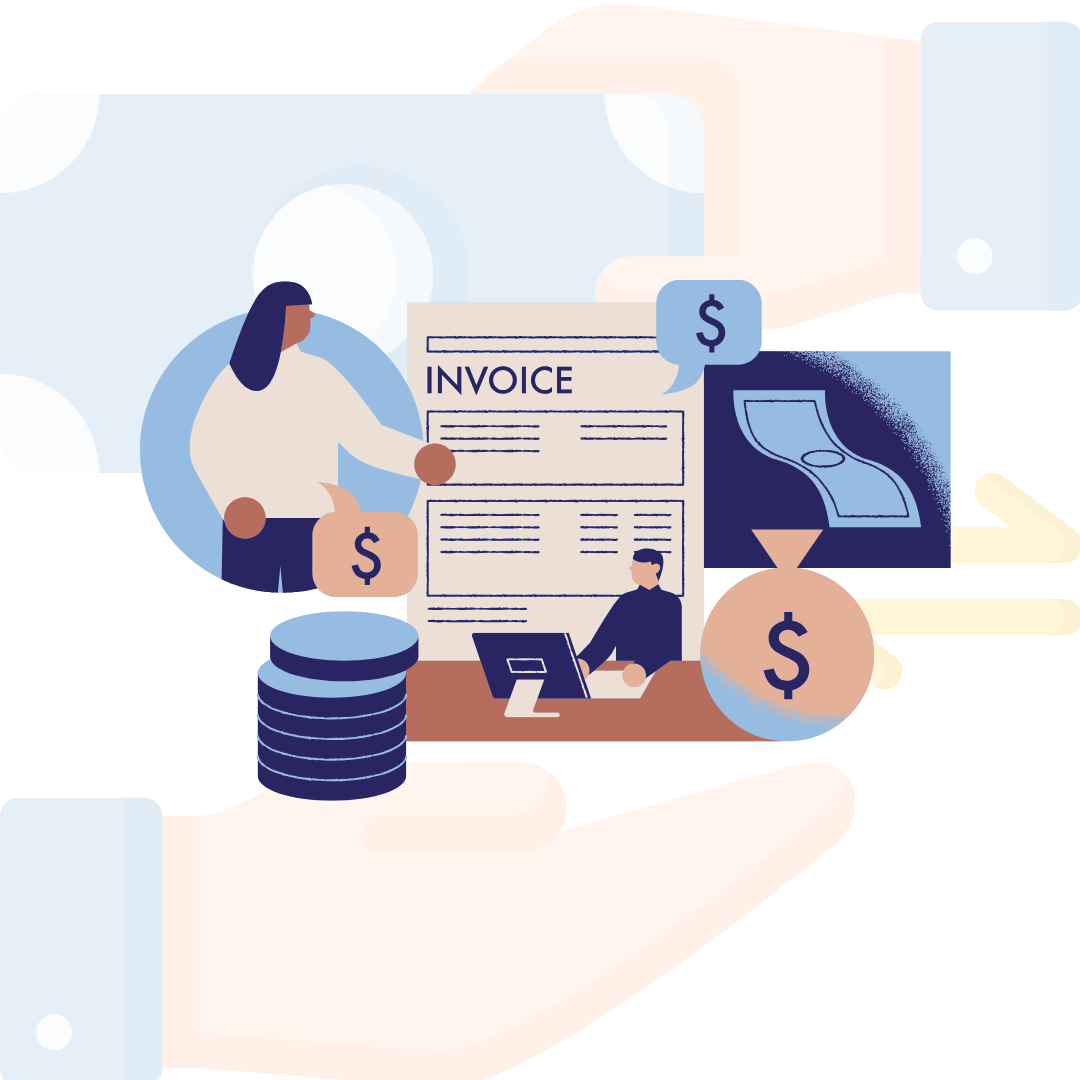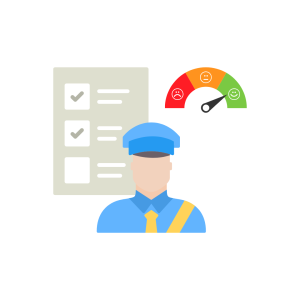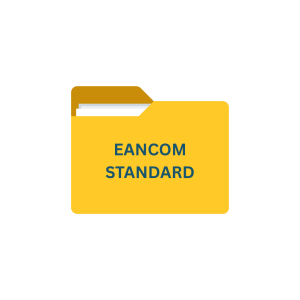Introduction
Gone are the days of manual data entry and paper-based invoicing systems. Today, businesses are leveraging advanced technologies to streamline their processes, reduce errors, and accelerate their financial workflows. At the forefront of this revolution is e-invoicing – a digital method of creating, sending, and processing invoices that is rapidly becoming the norm across industries.
E-invoicing represents more than just a shift from paper to digital formats. It’s a comprehensive reimagining of the entire invoicing process, from creation to archival. By digitizing invoices, businesses can automate many of the tedious and error-prone tasks associated with traditional invoicing methods. This not only saves time and resources but also enhances the accuracy and reliability of financial records.
However, the true power of e-invoicing is unlocked when it’s combined with cutting-edge technologies like EDI, Optical Character Recognition (OCR) and Natural Language Processing (NLP). These AI-driven tools take digital invoicing to the next level, enabling systems to not just store digital copies of invoices but to understand and process the information contained within them. This capability opens up a world of possibilities for automation, data analysis, and process optimization.
Understanding OCR Technology in Invoice Processing
At its core, OCR is a technology that converts different types of documents, such as scanned paper documents, PDF files, or images captured by a digital camera, into editable and searchable data.
In the context of invoice processing, OCR acts as the first step in transforming a static invoice image into dynamic, usable information.
The process begins with the OCR software analyzing the structure of the document. It identifies different elements such as text, images, and tables. For invoices, this means distinguishing between headers, line items, totals, and other key components. The software then breaks down these elements into smaller components – lines, words, and individual characters.
Once the characters are isolated, the OCR engine employs sophisticated algorithms to recognize each character. These algorithms compare the shapes of the characters against vast databases of font libraries and character patterns. Advanced OCR systems can handle various fonts, sizes, and even handwritten text, though the latter remains more challenging.
OCR in Action: Transforming Invoices into Data
When applied to invoice processing, OCR technology performs several crucial functions:
- Document Capture: OCR systems can process invoices received in various formats – whether they’re scanned paper documents, emailed PDFs, or digital images.
- Data Extraction: The system extracts key information from the invoice, such as invoice numbers, dates, vendor details, line items, and total amounts.
- Structured Data Creation: The extracted information is converted into a structured format that can be easily integrated into accounting or ERP systems.
- Error Detection: Advanced OCR systems can flag potential errors or inconsistencies in the extracted data, such as mismatched totals or invalid dates.
Enhancing OCR with Machine Learning
Modern OCR systems often incorporate machine learning algorithms to improve their accuracy and efficiency over time. These AI-enhanced OCR engines can:
- Learn from corrections made by users, continuously improving their recognition accuracy.
- Adapt to specific invoice layouts and formats frequently used by a company’s vendors.
Recognize patterns and automatically categorize different types of invoices
The Impact of OCR on Invoice Processing Efficiency
The implementation of OCR in invoice processing brings about several significant benefits:
- Time Savings: Manual data entry is virtually eliminated, drastically reducing the time spent on processing each invoice.
- Increased Accuracy: By removing human error from data entry, OCR significantly reduces mistakes in invoice processing.
- Cost Reduction: With faster processing and fewer errors, businesses can reduce the overall cost associated with invoice management.
- Improved Data Accessibility: Digitized invoices are easily searchable and accessible, improving record-keeping and auditing processes.
- Scalability: OCR systems can handle large volumes of invoices, making it easier for businesses to scale their operations without proportionally increasing their administrative overhead.
OCR Technology - Challenges and Considerations
While OCR technology offers numerous advantages, it’s important to be aware of potential challenges:
- Accuracy with Complex Layouts: Some invoices with non-standard or complex layouts may pose challenges for OCR systems.
- Handwriting Recognition: While improving, OCR still struggles with accurately recognizing handwritten text.
- Initial Setup and Training: Implementing an OCR system may require an initial investment of time and resources to set up and train the system for optimal performance.
Leveraging NLP for Advanced Invoice Analysis
Natural Language Processing (NLP) represents the next frontier in invoice processing technology, building upon the foundation laid by OCR. While OCR excels at converting visual data into text, NLP takes this a step further by enabling computers to understand, interpret, and manipulate human language. In the context of invoice processing, NLP adds a layer of intelligence that transforms raw data into actionable insights. Let’s explore how NLP is revolutionizing the way businesses handle and analyze their invoices.
The Role of NLP in Invoice Processing
NLP in invoice processing goes beyond mere text recognition. It involves understanding the context, intent, and relationships within the extracted data. Here’s how NLP enhances the invoice processing workflow:
- Contextual Understanding: NLP algorithms can understand the context of different pieces of information on an invoice. For instance, it can differentiate between a shipping address and a billing address, even if they’re not explicitly labeled.
- Entity Recognition: NLP can identify and categorize entities such as company names, dates, product codes, and monetary amounts, even when they appear in non-standard formats.
- Semantic Analysis: By analyzing the meaning of words and phrases, NLP can interpret complex line items or descriptions, categorizing them appropriately.
- Pattern Recognition: NLP algorithms can recognize patterns across multiple invoices, helping to standardize data from different vendors or formats.
Key Applications of NLP in E-Invoicing
The integration of NLP in e-invoicing systems opens up a range of powerful applications:
- Automated Invoice Categorization
NLP can automatically categorize invoices based on their content. This is particularly useful for businesses dealing with a wide range of expenses. For example:
- Identifying whether an invoice is for goods or services
- Categorizing expenses into predefined accounts (e.g., office supplies, travel expenses, utilities)
- Flagging invoices that require special handling or approval
- Anomaly Detection
By understanding the typical patterns in invoices, NLP systems can identify anomalies or potential errors:
- Detecting unusual charges or pricing discrepancies
- Identifying missing information or inconsistencies in invoice data
- Flagging potential duplicate invoices
- Compliance Checking
NLP can assist in ensuring invoices comply with company policies and regulatory requirements:
- Verifying that invoices contain all necessary information for tax purposes
- Checking if charges align with contracted rates or agreed-upon terms
- Identifying invoices that may require additional documentation or approvals
- Data Extraction and Enrichment
NLP enhances the data extraction process by:
- Extracting and standardizing complex information like product descriptions or service details
- Inferring additional information based on context (e.g., determining the nature of a service from its description)
- Linking invoice data with other business systems for richer context and analysis
- Query Processing and Reporting
Advanced NLP systems can enable natural language queries on invoice data:
- Allowing users to ask questions in plain language (e.g., “Show me all invoices from Vendor X in the last quarter”)
- Generating automated reports and summaries of invoice data
- Providing insights on spending patterns and vendor relationships
The Impact of NLP on Invoice Processing Efficiency
The implementation of NLP in invoice processing brings several significant benefits:
- Enhanced Accuracy: By understanding context and meaning, NLP reduces errors in data interpretation and categorization.
- Faster Processing: Automated understanding and categorization of invoice content accelerate the entire processing cycle.
- Improved Decision Making: NLP-driven insights enable better financial decision-making and spend analysis.
- Reduced Manual Intervention: Complex invoices that previously required human review can often be processed automatically.
- Scalability: NLP systems can handle increasing volumes and varieties of invoices without a proportional increase in resources.
Challenges and Considerations in NLP Implementation
While NLP offers powerful capabilities, there are challenges to consider:
- Language and Cultural Nuances: NLP systems need to be trained to handle different languages and cultural contexts in international business.
- Continuous Learning: To maintain accuracy, NLP systems require ongoing training and updates to adapt to new invoice formats or business changes.
- Data Privacy: As NLP systems process sensitive financial information, robust data security measures are crucial.
- Integration Complexity: Implementing NLP may require significant changes to existing invoice processing systems and workflows.
The Synergy of OCR and NLP in E-Invoicing
The combination of Optical Character Recognition (OCR) and Natural Language Processing (NLP) in e-invoicing creates a powerful synergy that is revolutionizing how businesses handle their financial documents. This integration represents a leap forward in automation and intelligence, offering capabilities that go far beyond traditional invoice processing methods. Let’s explore how these technologies work together to create a more efficient, accurate, and insightful invoicing system.
The Complementary Nature of OCR and NLP
OCR and NLP, while powerful on their own, truly shine when used in tandem. Here’s how they complement each other in the e-invoicing process:
- OCR Lays the Foundation: OCR technology serves as the initial step, converting physical or digital invoice images into machine-readable text. It handles the crucial task of digitizing the raw data from invoices.
- NLP Adds Intelligence: Once the text is extracted by OCR, NLP takes over to interpret, categorize, and analyze the content. It adds context and meaning to the raw data, transforming it into actionable information.
The Workflow of OCR and NLP in E-Invoicing
To understand the synergy better, let’s walk through a typical workflow of how OCR and NLP work together in processing an invoice:
- Document Capture: The process begins with capturing the invoice, whether it’s a scanned paper document, an email attachment, or a digital file.
- OCR Processing:
- The OCR engine analyzes the document structure.
- It identifies and extracts text from various parts of the invoice.
- The extracted text is converted into a machine-readable format.
- NLP Analysis:
- The NLP system takes the OCR-extracted text and begins its analysis.
- It identifies key entities such as vendor names, dates, invoice numbers, and line items.
- The system understands the context of different text elements, distinguishing between addresses, product descriptions, and financial figures.
- Data Interpretation and Categorization:
- NLP algorithms categorize the extracted information into predefined fields.
- They interpret complex descriptions and categorize expenses accordingly.
- The system can infer additional information based on context and historical data.
- Validation and Error Checking:
- The combined system cross-references extracted data for consistency.
- It flags any anomalies or potential errors for human review.
- Advanced systems can even suggest corrections based on learned patterns.
- Data Integration:
- The processed and categorized invoice data is then integrated into the company’s financial systems using EDI technology.
- This EDI integration can trigger automated workflows, such as payment approvals or expense allocations.
Enhanced Capabilities Through Integration
The integration of OCR and NLP in e-invoicing brings several advanced capabilities:
- Intelligent Data Extraction
- OCR extracts the raw text, while NLP interprets complex line items, understanding product codes, quantities, and descriptions.
- This combination can handle varied invoice formats and layouts more effectively than OCR alone.
- Contextual Understanding
- While OCR can identify text, NLP can understand its meaning in the context of an invoice.
- For example, distinguishing between different types of dates (invoice date, due date, shipping date) based on their context.
- Advanced Categorization
- OCR provides the text, and NLP categorizes expenses into appropriate accounts, even when descriptions are non-standard or ambiguous.
- Anomaly Detection
- The system can identify discrepancies between what OCR extracts and what NLP expects to see, flagging potential errors or fraudulent entries.
- Learning and Adaptation
- As the system processes more invoices, it learns from corrections and feedback, continuously improving its accuracy in both text recognition (OCR) and interpretation (NLP).
Benefits of the OCR-NLP Synergy in E-Invoicing
The combination of these technologies offers numerous benefits:
- Increased Accuracy: The dual-layer processing significantly reduces errors in data extraction and interpretation.
- Faster Processing: Automation of both text extraction and understanding leads to much quicker invoice processing times.
- Reduced Manual Intervention: Even complex or non-standard invoices can be processed with minimal human oversight.
- Enhanced Data Analysis: The rich, structured data produced by this system enables more sophisticated financial analysis and reporting.
- Improved Compliance: Automated checks ensure invoices meet regulatory and company policy requirements.
- Scalability: The system can handle increasing volumes and varieties of invoices without a proportional increase in resources.
OCR-NLP Integration Challenges and Considerations
While the integration of OCR and NLP offers significant advantages, there are challenges to consider:
- Implementation Complexity: Integrating these advanced technologies into existing systems can be complex and may require significant initial investment.
- Training and Customization: The system needs to be trained on company-specific data and customized to handle unique invoice formats or industry-specific terminology.
- Data Privacy and Security: As these systems handle sensitive financial information, robust security measures are crucial.
- Continuous Improvement: To maintain and improve accuracy, ongoing monitoring and updating of the system are necessary.
Implementing E-Invoicing Solutions: Best Practices and Considerations
The transition to e-invoicing, powered by OCR and NLP technologies, is a significant undertaking that can transform a company’s financial operations. However, successful implementation requires careful planning, strategic decision-making, and adherence to best practices.
Here are the steps for effectively implementing an e-invoicing solution in your organization
1. Assessing Your Current Process and Needs
Before diving into implementation, it’s crucial to thoroughly evaluate your existing invoice processing system and identify your specific needs
- Current Workflow Analysis
- Volume and Variety
- Integration Requirements
- Compliance Needs
2. Choosing the Right Solution
Selecting the appropriate e-invoicing solution is critical to the success of your implementation
- Feature Evaluation
- Customization Options
- User-Friendliness
- Support and Training
- Security Features
3. Planning the Implementation
A well-structured implementation plan is essential for a smooth transition
- Set Clear Objectives
- Create a Timeline
- Allocate Resources
- Developing a Change Management Strategy
4. Data Preparation and System Configuration
Preparing your data and configuring the system correctly are crucial steps
- Data Cleansing
- Template Creation
- Rule Setting
- Integration Setup
5. Testing and Quality Assurance
Thorough testing is essential to ensure the system works as intended:
- Pilot Testing
- Accuracy Verification
- Workflow Testing
- User Acceptance Testing
6. Training and Change Management
Proper training and change management are key to user adoption and overall success
- Comprehensive Training
- Documentation
- Phased Rollout
- Feedback Mechanism
Conclusion
As we’ve explored throughout this comprehensive look at e-invoicing, the integration of EDI, Optical Character Recognition (OCR), and Natural Language Processing (NLP) technologies is not just changing how businesses handle invoices – it’s revolutionizing entire financial ecosystems. The journey from traditional, manual invoice processing to intelligent, automated e-invoicing systems represents a significant leap forward in business efficiency, accuracy, and strategic capability.
Commport EDI Solutions
Frequently Asked Questions
E-Invoicing is the digital exchange of invoice documents between businesses using structured formats like EDI, XML, or UBL. It automates invoice processing, reducing manual errors and improving payment cycles.
EDI (Electronic Data Interchange) enables the secure, standardized exchange of invoice documents between businesses, ensuring seamless data integration across supply chains.
E-Invoicing reduces manual processing costs, invoice errors, and payment delays, leading to improved cash flow, lower administrative expenses, and enhanced financial efficiency.
Businesses should choose the right OCR, NLP, and EDI solutions, integrate them with existing ERP/accounting systems, ensure regulatory compliance, and continuously monitor performance for optimization.
OCR converts paper-based or scanned invoices into machine-readable digital formats, allowing automated data extraction, validation, and processing.
NLP analyzes and understands invoice data, enabling context-aware extraction, classification, and fraud detection, leading to faster and more accurate invoice approvals.





